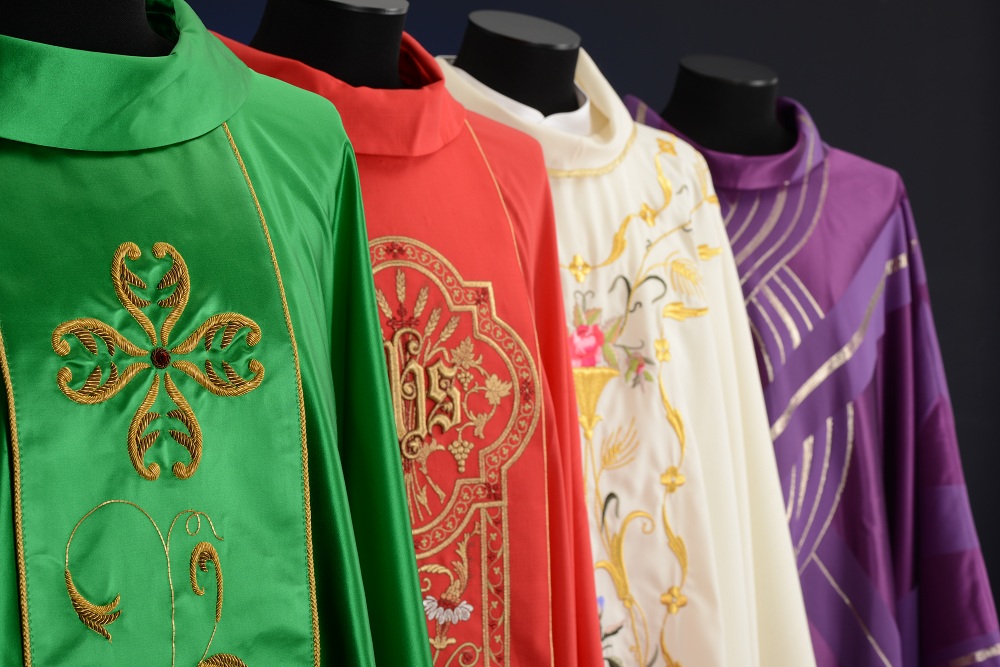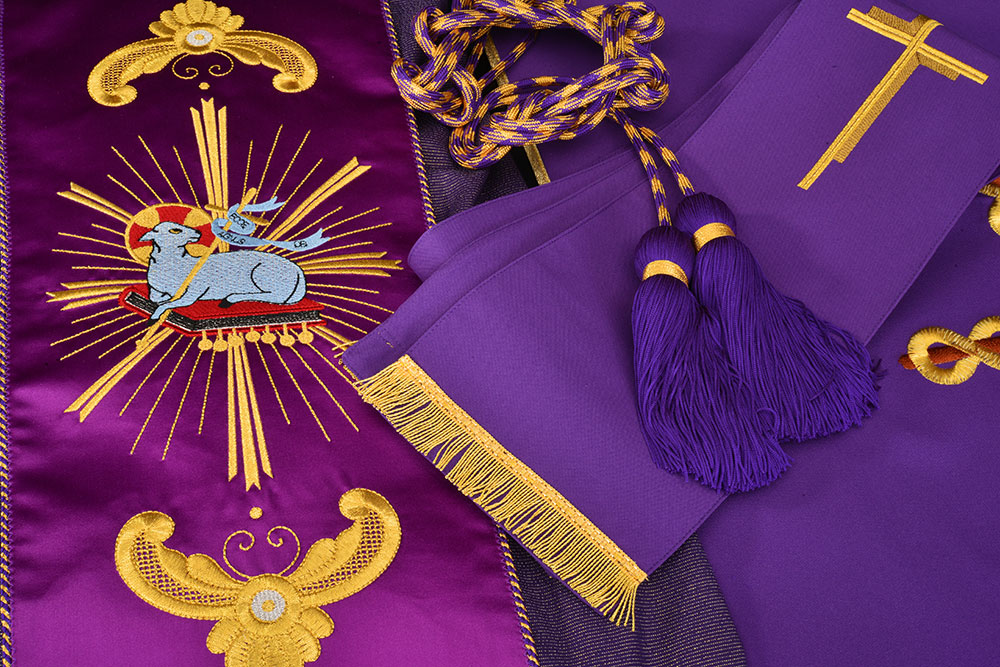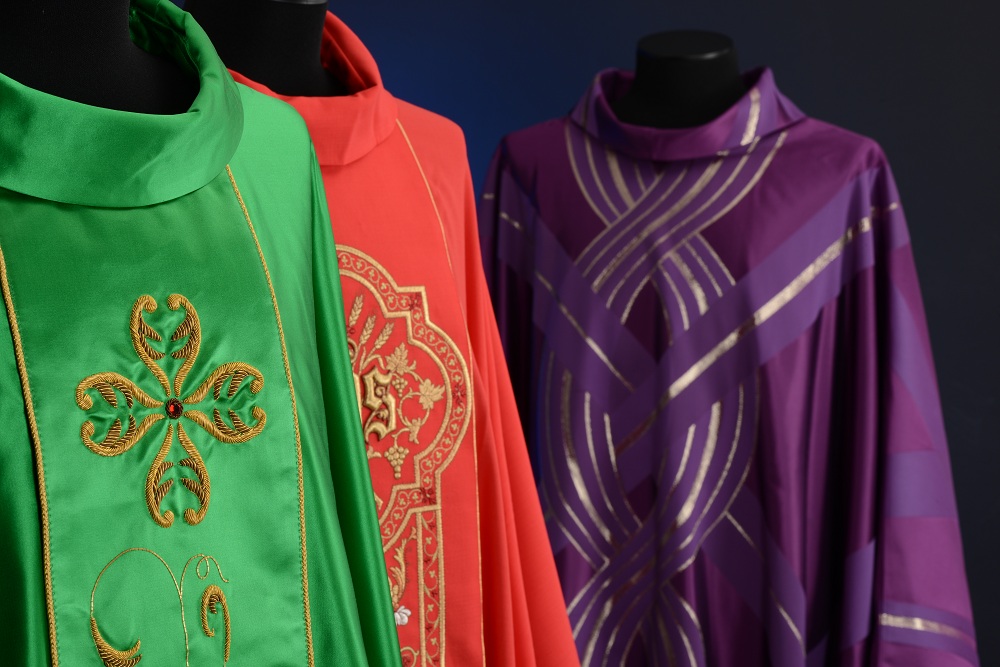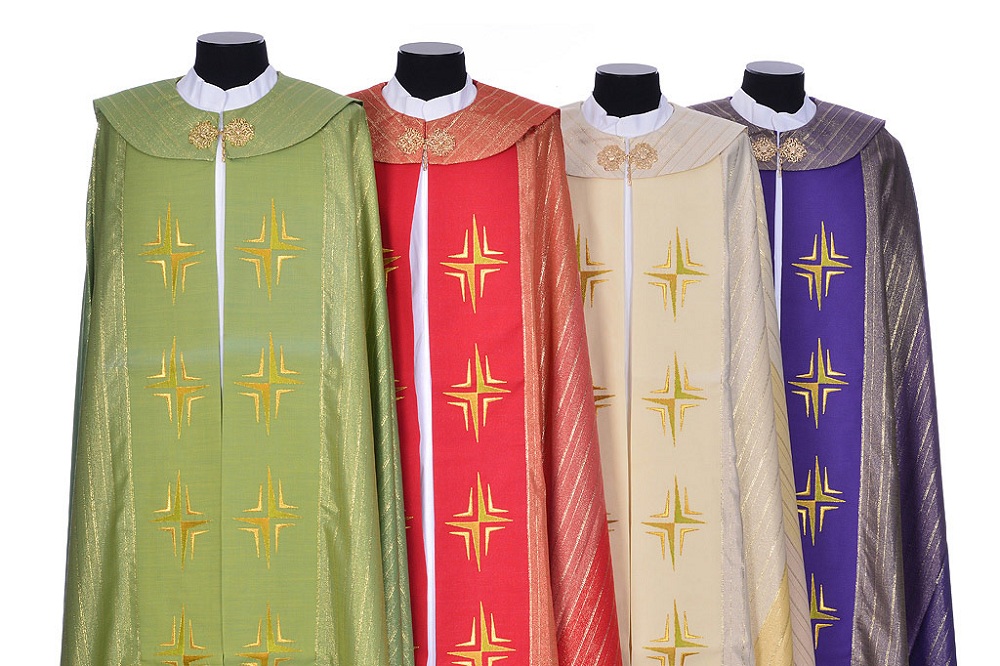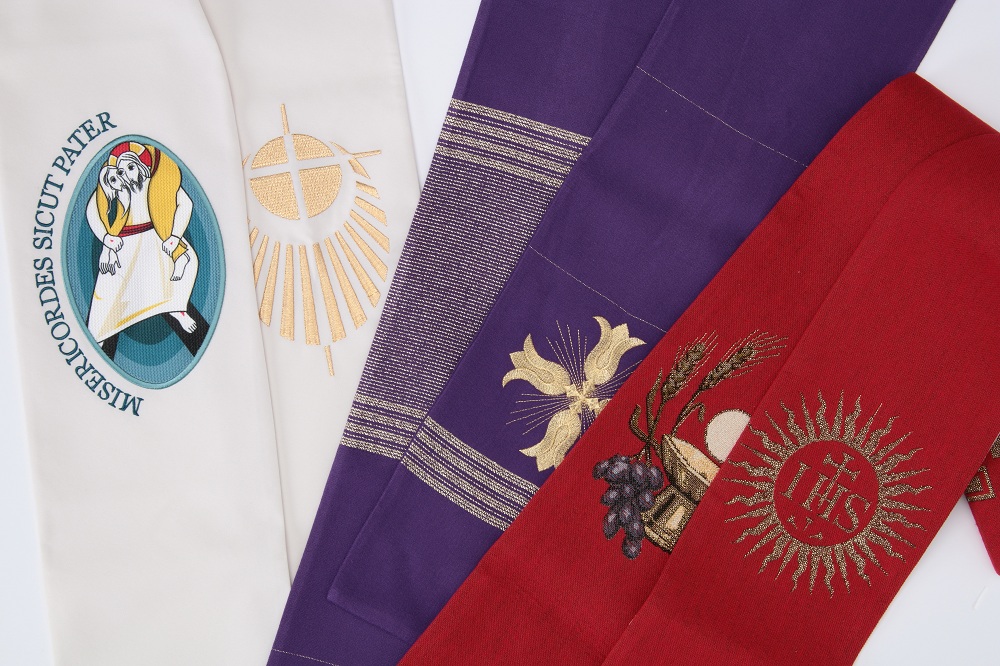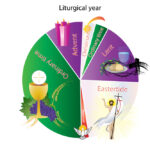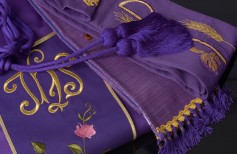The liturgical vestments of Catholic priests during religious celebrations and the many sacred vestments used by them, differs according to a range of colours that have a precise symbolic meaning.
The colours of liturgical vestments, such as the cope, chasuble, dalmatic and the stole, refer to the liturgical season or the current festive occasion. There are four liturgical colours used that were coded by Paul VI in the Roman rite in 1969: white, green, red and purple. In addition to these, there are other colours, such as pink, light blue, gold and black, used in liturgical vestments only on some special occasions or as an alternative to canonical colours. Let us examine one by one.
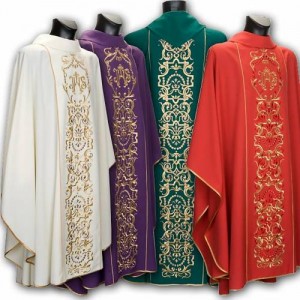
White symbolises joy and purity resulting from Faith. It is one of the most common colours in liturgical vestments that are used every day by priests, regardless of the current liturgical season or celebration. It is particularly related to the worship of Jesus and Mary for Easter and Christmas. It also symbolises the resurrection, Christ rising in exaltation of the Faith.
After white, the most used color in Sunday Masses and weekdays outside of defined holidays is green, a symbol of hope, perseverance and continued listening. It accompanies the daily path of priests and the faithful who turn to them.
The colour purple is linked to penance, waiting and mourning. It is particularly used during Advent and Lent. Purple liturgical vestments characterise Mass for the dead, and can be replaced by black vestments.
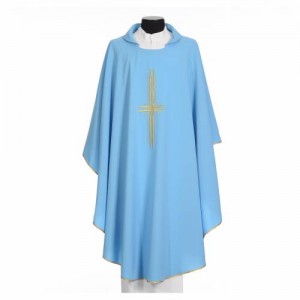
with golden cross
Red symbolises the passion of Christ and the blood spilled in martyrdom by Him and Saints. This is used for liturgical vestments on Palm Sunday, Good Friday, Pentecost, in the celebrations dedicated to the Passion of the Lord, in the feasts of the Apostles, the Evangelists and the Holy Martyrs.
As for non-codified colours, blue is used especially for celebrations in honour of the Blessed Virgin Mary, mostly in countries of Spanish or Portuguese culture, pink, which indicates joy and solemnity for the Third Sunday of Advent and the fourth Sunday Lent, and finally gold symbolises royalty and can replace all colours at every opportunity, although usually is only used in certain very important Solemnities.

